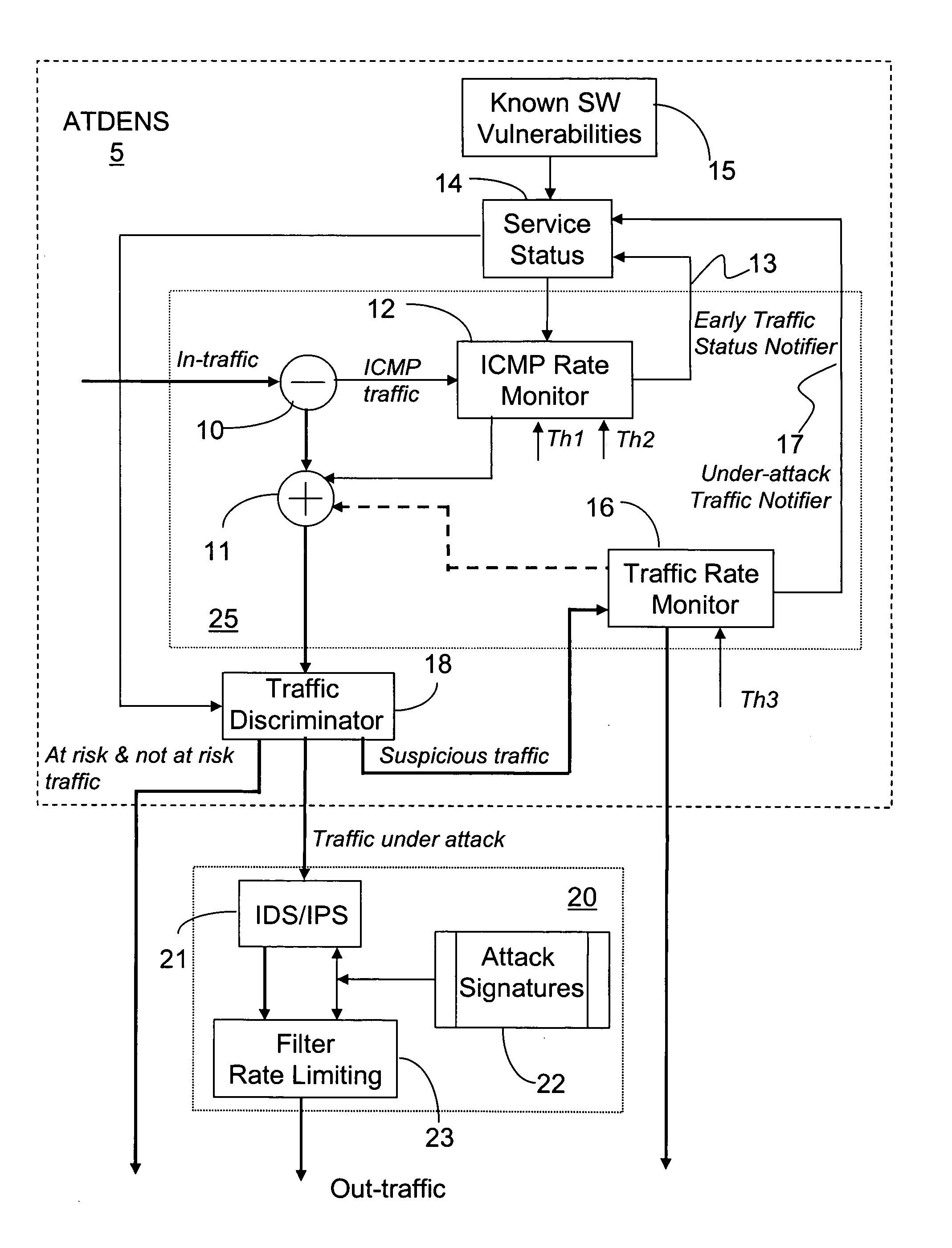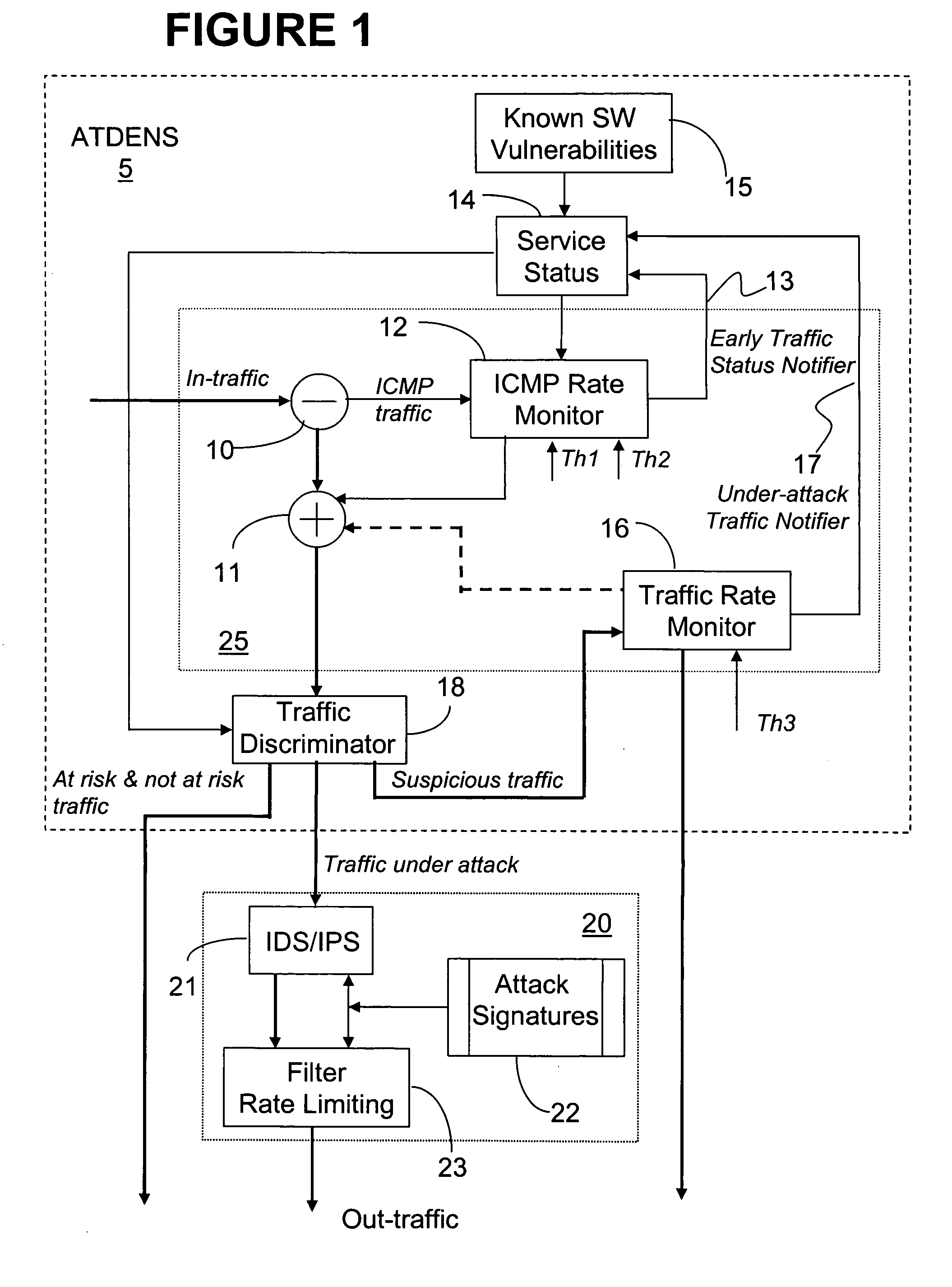System and method for detecting abnormal traffic based on early notification
a technology of early notification and abnormal traffic, applied in the field of communication networks, can solve the problems of affecting the service of a targeted victim, affecting the service, and affecting the ability of victims to detect and react efficiently to a large variety of attacks, so as to reduce the amount of traffic and reduce the effect of significant traffi
- Summary
- Abstract
- Description
- Claims
- Application Information
AI Technical Summary
Benefits of technology
Problems solved by technology
Method used
Image
Examples
Embodiment Construction
[0024] The system of the invention is installed at nodes equipped with conventional intrusion detection system (IDS) or intrusion prevention system (IPS) technology; and is particularly efficient in the customer equipment (CE) and border router applications. However, any routers may benefit from this approach at different extend.
[0025] The invention proposes an early notification mechanism that enables fast identification of “suspicious” traffic using known characteristics of malware attacks. In addition, the system of the invention triggers the costly operation of the IDS / IPS only for a fraction of the traffic going through the network node, with a view to ease the integration of the IDS / IPS technology into high-end routers.
[0026]FIG. 1 illustrates a block diagram of the system for abnormal traffic detection based on early notification (ATDEN) according to the invention, denoted with reference numeral 5. The ATDEN system 5 comprises a service status unit 14 which maintains a stat...
PUM
 Login to View More
Login to View More Abstract
Description
Claims
Application Information
 Login to View More
Login to View More - R&D
- Intellectual Property
- Life Sciences
- Materials
- Tech Scout
- Unparalleled Data Quality
- Higher Quality Content
- 60% Fewer Hallucinations
Browse by: Latest US Patents, China's latest patents, Technical Efficacy Thesaurus, Application Domain, Technology Topic, Popular Technical Reports.
© 2025 PatSnap. All rights reserved.Legal|Privacy policy|Modern Slavery Act Transparency Statement|Sitemap|About US| Contact US: help@patsnap.com



